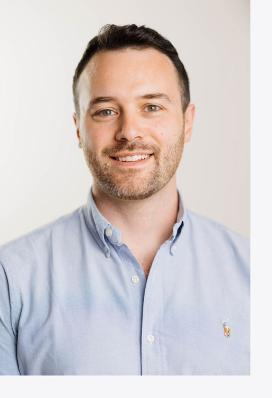Daniel Crawford
Founder, Axial3D
MSc Medical Visualisation and Anatomy 2013
 During Daniel’s MSc project at the University of Glasgow he was investigating innovative ways to create 3D printed physical replicas of patients' anatomy from traditional 2D medical scans. He presented a surgeon with a 3D printed anatomical model of a patient who had sustained multiple bone fractures in a road traffic collision. The surgeon was amazed to see there was a portion of the patient’s fracture that he had missed on the 2D scan, which led to improved diagnosis and treatment plan for the patient.
During Daniel’s MSc project at the University of Glasgow he was investigating innovative ways to create 3D printed physical replicas of patients' anatomy from traditional 2D medical scans. He presented a surgeon with a 3D printed anatomical model of a patient who had sustained multiple bone fractures in a road traffic collision. The surgeon was amazed to see there was a portion of the patient’s fracture that he had missed on the 2D scan, which led to improved diagnosis and treatment plan for the patient.
Daniel founded Axial3D in 2015 to solve a problem in the healthcare space: surgeons use 2D medical imaging to diagnose and plan patient surgery. These images can be difficult to interpret and can impact patient outcomes and increase treatment costs. This matter can be resolved by implementing patient-specific treatment plans, which utilise 3D visualizations and anatomical models for optimal outcomes.
As creating 3D anatomical models from 2D medical images is a manual, lengthy, and high-cost process, Daniel sought to automate it and pivoted from 3D medical printing to software development. He has created a patented artificial intelligence software solution, which automatically converts patient’s 2D DICOM data into 3D visuals which can be printed in 3D. A surgeon can upload a patient-specific imaging files and have a digital and physical 3D printed model available within two days.
Since inception Daniel has raised over $20+M in funding and grown the company to over 60 staff working with customers in over 30 countries around the world.
Chris Rumana, Neurosurgeon, Tallahassee Neurological Clinic said ‘The technology Axial3D has developed is truly unique, has a global market and impacts directly on the success of people's health across all medical disciplines. I strongly believe that within the next 10 years there will be a dramatic change to virtually all procedures being planned on 3-D data sets and that individualized medical treatments will become routine. The work that Daniel and Axial3D have done will be the key driving force in making this happen.’
Under Daniel’s leadership Axial3D has become a world-leading medical technology company offering an essential service with increased efficiency and accuracy. It is affordable and accessible to healthcare systems globally and is committed to improving patient-specific care and surgical outcomes.
UN Sustainable Development Goals (SDGs)
Daniel's work at Axial3D contributes to SDG 3 'Ensure healthy lives and promote well-being for all', their technology contributes to this SDG by ensuring an essential service for surgical planning with increased efficiency and accuracy that is affordable and accessible to healthcare systems globally. Axial 3Ds work also contributes to SDG 9 "Build resilient infrastructure, promote inclusive and sustainable industrialization and foster innovation", by optimizing and upgrading the health infrastructure for all surgeries by enabling routine, global access to 3D anatomical models for surgical planning.
The vote is now closed and the winner will be announced in the winter edition of Avenue Magazine.

